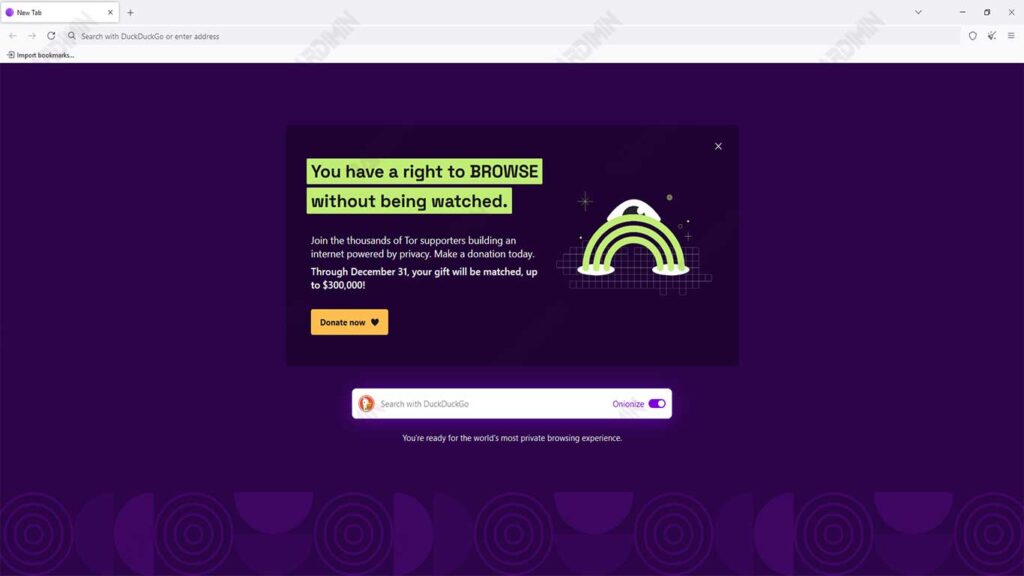Maintaining online privacy is important for many people in a connected digital world. The Darknet and Tor Network are here as a solution for those who want to stay anonymous and protect their online activities from surveillance. However, what exactly is the Darknet and how does the Tor Network work?
The darknet is often considered a hidden part of the internet, where data and information are inaccessible to ordinary users. On the other hand, Tor (short for The Onion Router) is software that allows access to the Darknet through a layered encryption system known as onion routing. The technology focuses not only on anonymity but also on freedom of expression, especially in countries with strict censorship.
What is Tor?
Tor, which stands for The Onion Router, is software created to maintain user anonymity while surfing the Internet. By using layered encryption similar to the onion structure, Tor protects user information from network traffic tracking and analysis. It also allows access to hidden networks such as Darknet, which cannot be accessed through regular browsers such as Google Chrome or Mozilla Firefox.
Tor was first introduced in 2002 as a project developed by the United States Naval Research Laboratory (US Naval Research Laboratory). The original goal was to create a secure communication tool for military intelligence. However, over time, Tor evolved into an open-source project that can be accessed by anyone, including activists, journalists, and the general public who want to maintain their privacy online.

Since its launch, Tor has undergone many updates and improvements. Today, Tor Browser software is built on top of Mozilla Firefox, providing a familiar interface for users. Its popularity is constantly increasing, especially among those who need anonymous access to the internet, both for legitimate and illegitimate purposes.
How Tor Maintains the Anonymity of Its Users
Tor works by redirecting internet traffic through a series of relays maintained by volunteers around the world. Here’s how Tor maintains anonymity:
- When a user sends data through the Tor network, it doesn’t go directly to the destination. Instead, the data passes through several relays randomly.
- User data is encrypted multiple times before leaving the device. Each relay can only decrypt one layer of encryption to know the next.
- The data passes through up to 7,000 relays before reaching the final destination. This process makes traffic analysis very difficult, so user identities remain secure.
- Once the data reaches the last relay, it is decrypted and sent to the destination IP address without revealing the user’s real IP address.
How Tor and the Darknet Work
Tor and the Darknet serve to protect users’ identities uniquely, using a system called onion routing. This technology aims to provide anonymity by encrypting data in multiple layers, similar to onions. Here is a further explanation:
Onion Routing Mechanism and Layered Encryption
- Onion Routing is a way that wraps user data in multiple layers of encryption before it is sent over the network.
- Each layer encrypts certain information, including the sender’s IP address, so that the user’s identity remains hidden.
- The encrypted data is then sent through various relays managed by volunteers around the world.
Illustration of Data Processing Passing Through 7,000 Relays on the Tor Network
The process of sending data through the Tor network can be described as follows:
- The user requests to access the website.
- The data is encrypted with multiple layers.
- The encrypted data is sent through a series of relays, which can number up to 7,000 random relays:
- Each relay receives data, decrypting one layer to know the next relay.
- This process repeats until the data reaches the last relay.
- First Relay: The first relay only knows the user’s location, but not the final destination.
- Middle Relay: The next relay simply passes the data without knowing the origin or destination.
- Last Relay: The last relay removes the last layer of encryption and sends the data to the final destination, but it doesn’t know who the original sender is.

